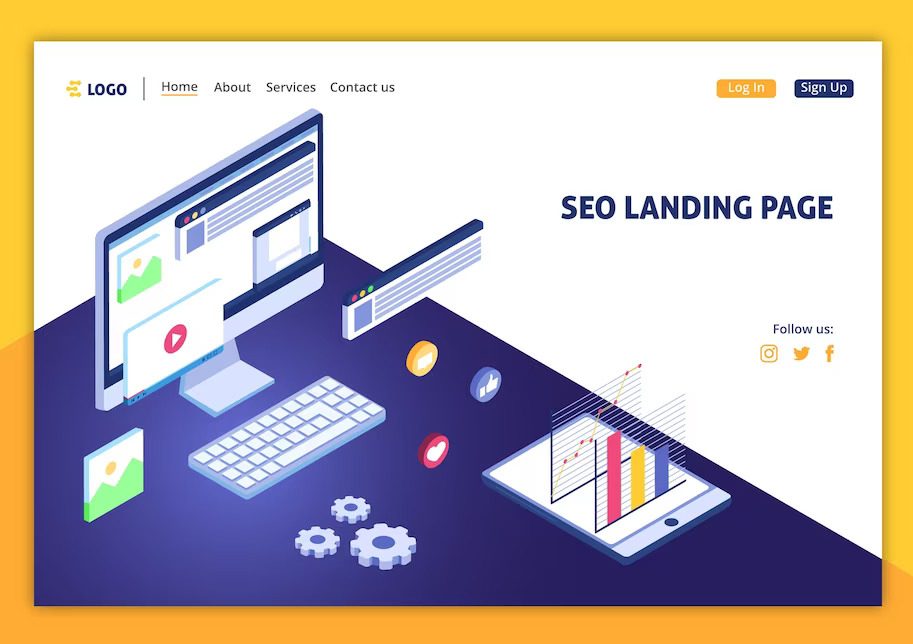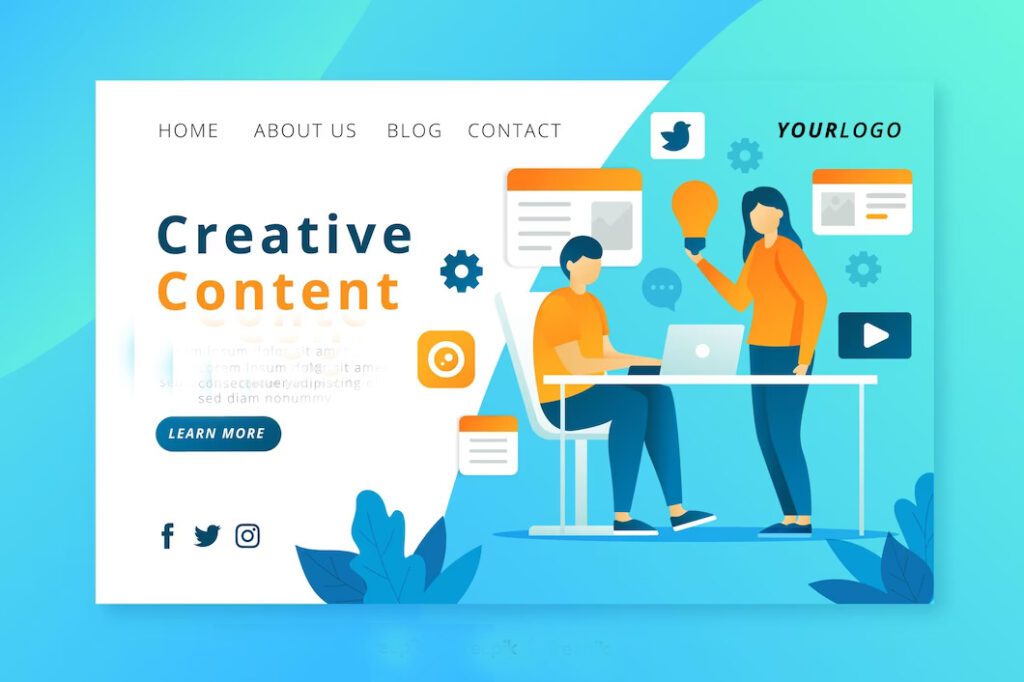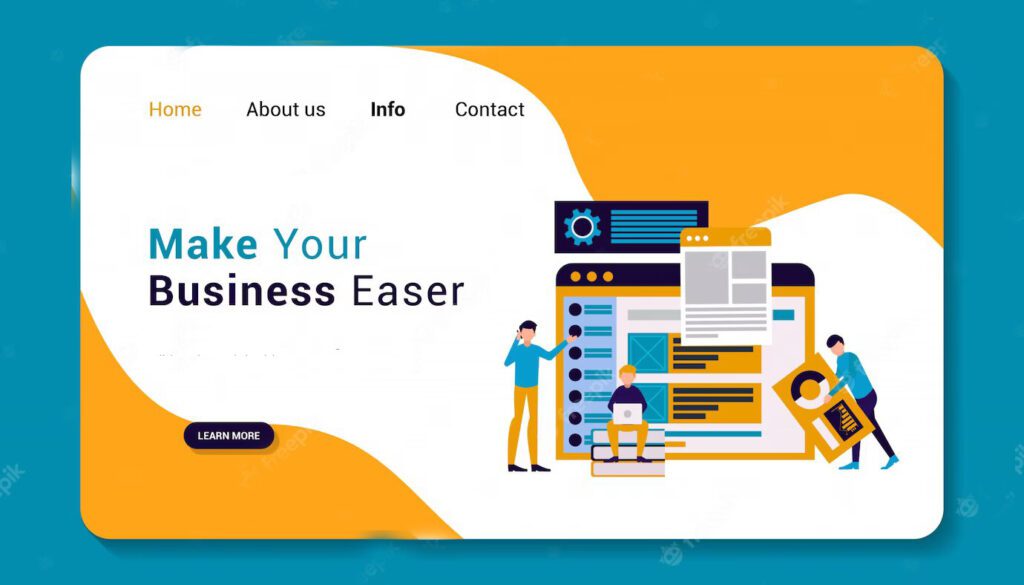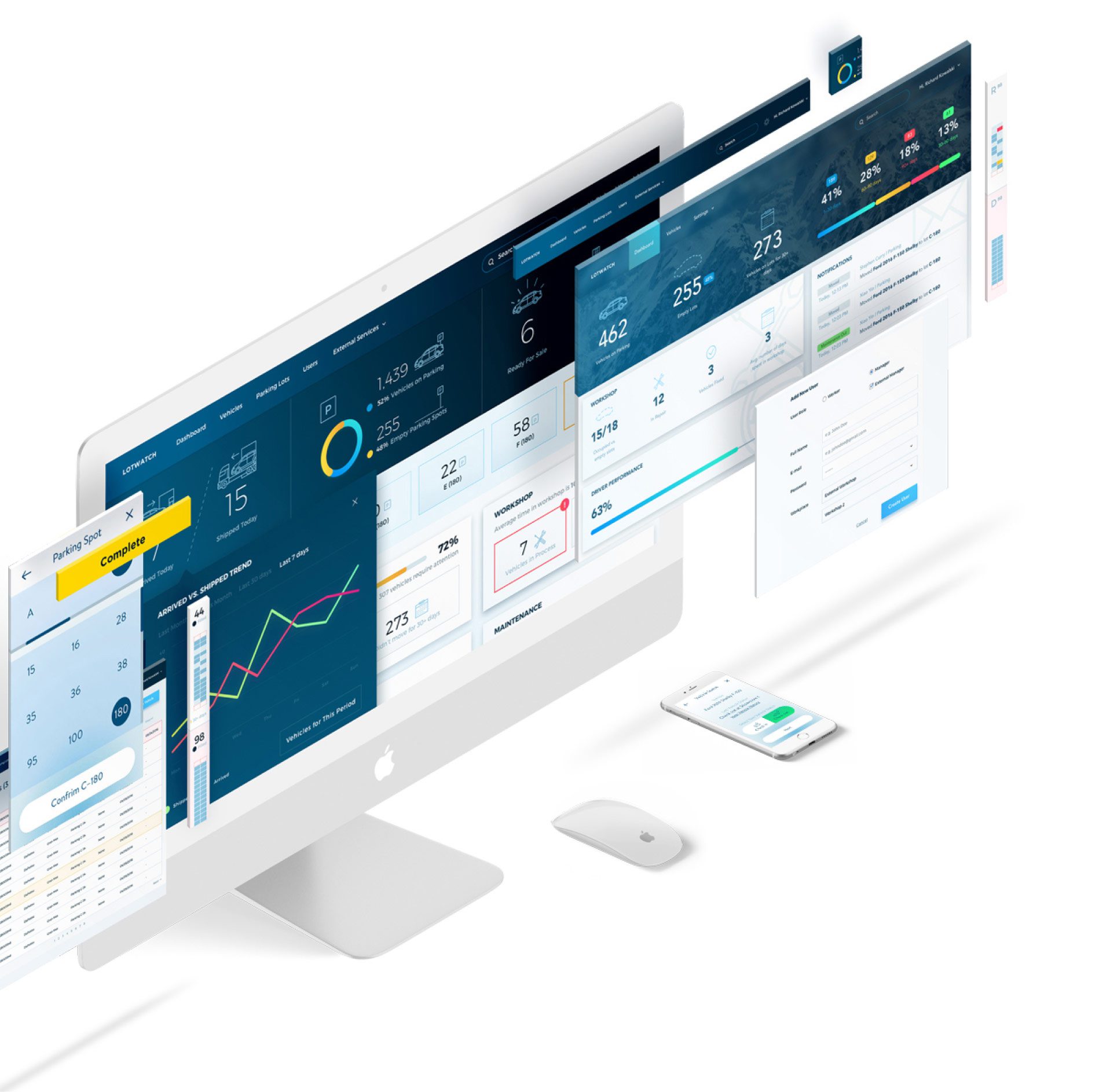01. Usability: A website should be easy to navigate and use.

Yes, usability is an important principle of good web design. A website should be designed in a way that makes it easy for users to find what they are looking for and complete tasks, such as making a purchase or filling out a form. This includes having a clear hierarchy, consistent layout, and intuitive navigation. It is also important to consider the needs of the target audience and design the website accordingly. For example, a website for seniors may need larger text and buttons to make it easier to use. Other elements of usability include clear and concise content, fast loading times, and an overall user-friendly experience.
Statistics on Web Design Principles
First impressions: According to a study by Google, users form an opinion about a website in 50 milliseconds or less.
Mobile responsiveness: As of 2021, mobile devices accounted for 54.8% of global website traffic, according to Statista. Therefore, it’s essential to have a website that’s mobile-friendly and responsive.
Load time: A study by Akamai found that 47% of users expect a web page to load in two seconds or less, and 40% will abandon a website that takes more than three seconds to load.
Color: According to a study by Kissmetrics, 93% of consumers place visual appearance and color above other factors when shopping.
Navigation: A study by Nielsen Norman Group found that users spend an average of 10-20 seconds on a homepage before deciding whether to stay or leave. A clear and intuitive navigation system can help users find what they’re looking for quickly.
02. Accessibility: A website should be accessible to users with disabilities.

It is another important principle of good web design. A website should be designed in a way that makes it accessible to users with disabilities, such as those who are blind or have low vision. This includes using alt text for images to provide a description of the image for screen readers, and proper heading structure to make the content accessible to screen readers. Other elements of accessibility include using color contrast to ensure that text is legible, using large and easy-to-read fonts, and providing alternatives to multimedia content, such as captions or transcripts for videos. By making a website accessible, you can ensure that it is usable for a wider range of users, including those with disabilities.
03. Mobile-friendliness: A website should be responsive and work well on smaller screens.

With the increasing number of users accessing the web on mobile devices, it’s important to ensure that a website is responsive and works well on smaller screens. This means that the layout and design of the website should adjust seamlessly to fit the screen size of the device it is being viewed on. This includes using responsive design techniques such as flexible grids and media queries to ensure that the website looks good on a variety of devices, including smartphones and tablets. By making a website mobile-friendly, you can ensure that it is accessible to a wider audience and provide a better user experience for those accessing the website on a mobile device.
04. Visual design: The visual design of a website should be attractive and appropriate for the target audience.

The design should be visually appealing and professional, and should also be appropriate for the target audience. This includes the use of color, typography, and imagery. For example, a website for a children’s toy store should have a fun and playful visual design, while a website for a law firm should have a more formal and professional design. It is important to consider the branding and messaging of the website when choosing the visual design, as well as the preferences and expectations of the target audience. A visually appealing design can help engage and attract users, while a poorly designed website can turn users away.
05. Content: The content on a website should be clear, concise, and informative.

The content should be clear, concise, and informative, and should be written in a way that is easy to understand and scan. It should also be organized and structured in a logical manner, using headlines and subheadings to break up large blocks of text and make it easier to read. It is also important to consider the needs and interests of the target audience when developing the content, and to ensure that it is relevant and useful to them. In addition to written content, a website may also include other types of content, such as images, videos, and audio files, which can help to enrich the user experience and provide additional information.
06. Performance: A website should load quickly and be optimized for performance.

Yes, performance is an important issue of good web design. A website should load quickly to ensure that users are not frustrated by long wait times. This includes optimizing images, using caching, and minimizing the use of external resources, such as large JavaScript libraries and fonts. A website should also be optimized for performance on different devices and in different browsers to ensure that it works well for all users. In addition, a website should be tested regularly to identify and fix any issues that may affect its performance. By ensuring that a website has good performance, you can provide a better user experience and improve the overall effectiveness of the website.
07. Search engine optimization (SEO): A website should be optimized for search engines to improve its visibility and ranking.

SEO is the process of optimizing a website to improve its ranking on search engines, such as Google. When a website is optimized for search engines, it is more likely to appear as a top result when users search for related keywords. There are many factors that can affect a website’s ranking, including the quality and relevance of the content, the structure and organization of the website, the use of keywords, and the presence of backlinks from other websites. By optimizing a website for search engines, you can improve its visibility and attract more organic traffic from search engines.
08. Security: A website should be secure to protect the privacy and security of its users.

A website should be secure to protect the privacy and security of its users, as well as to protect sensitive information, such as personal data and financial information. There are several measures that can be taken to ensure the security of a website, including using secure servers and encryption, implementing strong passwords and authentication, and regularly updating and patching the website to fix any vulnerabilities. It is also important to ensure that the website is compliant with relevant laws and regulations, such as the General Data Protection Regulation (GDPR) in the European Union. By ensuring the security of a website, you can protect the privacy and trust of its users and maintain the integrity of the website.
09. Interactivity: A website should offer interactive elements, such as forms and media, to engage its users.

By offering interactive elements, such as forms, polls, and games, a website can engage its users and provide a more interactive and enjoyable experience. Other types of interactive elements include videos, audio files, and social media feeds. These elements can help to keep users on the website longer and encourage them to return in the future. It is important to consider the needs and interests of the target audience when choosing interactive elements, and to ensure that they are appropriate and relevant. By offering interactive elements, a website can be more engaging and dynamic, and can provide a better user experience.
10. Flexibility: A website should be flexible and adaptable to accommodate future changes and updates.

A website should be designed in a way that allows it to be easily modified and updated as needed. This includes using a content management system (CMS) or a flexible website framework that allows changes to be made quickly and easily. A flexible website is also better able to adapt to new technologies and changing user needs. By being flexible, a website can remain current and relevant, and can continue to meet the needs of its users over time.
Other ways to ensure the flexibility of a website include using a responsive design, which allows the website to adapt to different screen sizes and devices, and using modular design elements, which can be easily reorganized or modified as needed. It is also important to plan for future expansion and updates, and to leave room for growth in the design and structure of the website. By being flexible, a website can evolve and grow with the needs of its users.
11. Brand consistency: A website should be consistent with the overall brand in terms of style and messaging.

A website should be consistent with the overall brand in terms of style and messaging to create a cohesive and professional image. This includes using the same logo, color scheme, and typography as other brand materials, and using language and messaging that is consistent with the brand voice and values. By maintaining brand consistency, a website can help to establish a strong and recognisable brand identity, and can improve the overall user experience.
It is important to consider the brand guidelines and style guide when designing a website to ensure that it is consistent with the overall brand. It is also important to regularly review and update the website to ensure that it remains consistent with the brand. By maintaining brand consistency, a website can help to establish trust and credibility with its users.
12. User experience (UX): A website should provide a positive and seamless user experience.

UX refers to how a user feels when interacting with a website. A website should provide a positive and seamless user experience to ensure that users are satisfied and engaged with the website. This includes having a clear and intuitive navigation, fast loading times, and relevant and useful content. It is also important to consider the needs and preferences of the target audience when designing the user experience, and to test the website to ensure that it is easy to use and meets the needs of the users.
There are many factors that can impact the user experience of a website, including the visual design, content, functionality, and performance. By focusing on the user experience, a website can provide a better overall experience for its users and improve its effectiveness.
13. Simplicity: A website should be simple and avoid clutter.

It should be simple and avoid clutter to make it easy for users to find what they are looking for and complete tasks. This includes using a clean and uncluttered layout, avoiding unnecessary elements, and using whitespace effectively to separate different sections of the website. A simple website is also easier to navigate and use, and can provide a better user experience.
It is important to strike a balance between simplicity and providing the necessary information and features. A website should have enough content and functionality to be useful and informative, but should not overwhelm the user with too much information or too many options. By keeping a website simple, you can improve its usability and effectiveness.
14. Consistency: A website should be consistent in terms of layout, design, and functionality.

It helps to create a cohesive and user-friendly experience for visitors. When a website is consistent in its layout, design, and functionality, it is easier for users to navigate and find the information they need. It also helps to establish trust and credibility for the website and the business it represents. Some specific ways in which consistency can be achieved on a website include using the same color scheme, font, and layout throughout the site, as well as ensuring that the navigation and other functional elements work the same way on all pages.
15. Readability: A website should be easy to read and understand.
It determines how easily users can understand and engage with the content on a website. There are several factors that can affect the readability of a website, including the font size and type, the color scheme, the line spacing and paragraph formatting, and the use of headings and subheadings. To improve the readability of a website, designers can choose a clear and easy-to-read font, use appropriate font sizes and line spacing, and use headings and subheadings to break up the content and make it easier to scan. They can also use a color scheme that is easy on the eyes and provides enough contrast between the text and the background to make the text legible.
16. Call to action (CTA): A website should have clear and effective CTAs to guide the user.
A call to action (CTA) is a button, link, or other element on a website that prompts the user to take a specific action, such as making a purchase, signing up for a newsletter, or filling out a form. CTAs are an important part of web design because they help to guide the user through the sales or conversion process and encourage them to take the desired action. To be effective, a CTA should be prominent, clear, and actionable, with a message that is relevant and compelling to the user. It should also be placed in a location where it is easy for the user to see and access. By using effective CTAs, businesses can improve the effectiveness of their website and increase conversions.
17. Trustworthiness: A website should establish trust with its users through credibility and transparency.
This helps to establish credibility and build trust with the users of a website. There are several ways in which a website can establish trustworthiness, including:
Displaying contact information: By displaying contact information, such as a phone number, email address, and physical address, a website can show that it is a legitimate business that can be contacted if needed.
Providing detailed information about products or services: By providing detailed information about the products or services offered, a website can demonstrate its expertise and help users make informed decisions.
Displaying customer reviews and ratings: By displaying customer reviews and ratings, a website can show that it has a track record of satisfied customers and build trust with potential customers.
Having a professional design: A website with a professional design can help to establish credibility and trust with users.
Being transparent: By being transparent about its business practices and policies, a website can build trust with users.
By focusing on these elements, businesses can create a website that establishes trust with its users and helps to build credibility and long-term relationships.
18. Inclusivity: A website should be inclusive and considerate of diverse users.
It ensures that a website is accessible and usable for people with a wide range of abilities, backgrounds, and needs. To be inclusive, a website should be designed in a way that is considerate of the diverse needs and abilities of its users. This can include designing for users with disabilities, such as providing alternatives to visual content for users who are blind or visually impaired, or designing for users with mobility impairments by using larger text and buttons and making sure that the website is easy to navigate using a keyboard.
Inclusivity can also involve designing for users who speak different languages or have different cultural backgrounds. This can include providing language options and using culturally appropriate design elements. By designing with inclusivity in mind, businesses can create a website that is accessible and usable for a wide range of users.
19. Innovation: A website should be innovative and use new technologies and design elements.
It allows businesses to stay ahead of the curve and create a unique and engaging experience for users. By using new technologies and design elements, businesses can create a website that stands out and provides value to users. Some specific ways in which a website can be innovative include:
Using new technologies: By incorporating new technologies, such as virtual and augmented reality, businesses can create an immersive and interactive experience for users.
Using unique design elements: By using unique design elements, such as custom graphics and animations, businesses can create a visually striking and memorable website.
Implementing new user experience (UX) features: By implementing new UX features, such as personalized recommendations or interactive elements, businesses can create a more engaging and user-friendly website.
By focusing on innovation, businesses can create a website that stands out and provides a unique and valuable experience for users.
20. Creativity: A website should be creative and stand out from the competition.
This allows businesses to stand out from the competition and create a unique and memorable experience for users. By using creative design elements, such as custom graphics and unique layouts, businesses can create a website that is visually striking and memorable. Additionally, by thinking creatively about the user experience (UX), businesses can create a website that is enjoyable and easy to use. Some specific ways in which a website can be creative include:
Using custom graphics and imagery: By using custom graphics and imagery, businesses can create a website that is visually striking and memorable.
Implementing unique layouts and design elements: By using unique layouts and design elements, businesses can create a website that stands out from the competition.
Thinking creatively about the UX: By thinking creatively about the UX, businesses can create a website that is enjoyable and easy to use.
By focusing on creativity, businesses can create a website that stands out from the competition and provides a unique and memorable experience for users.




